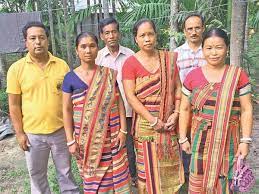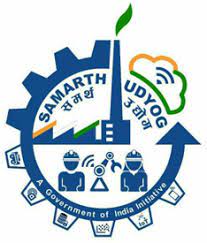Today Current Affairs: 26th August 2021 for UPSC IAS exams, State PSC exams, SSC CGL, State SSC, RRB, Railways, Banking Exam & IBPS, etc
Table of Contents
GM Soya Cake Imports:

With rising soyabean prices escalating the poultry industry’s costs, the Centre has allowed the import of 1.2 million metric tonnes of crushed and de-oiled genetically modified (GM) soya cake till October 31, 2021.
- Soyabean meal is an essential raw material for the poultry industry, but prices have more than doubled over the past couple of months. Besides, protein sources like fish, meat and milk have recorded high inflation.
- India allows the import of GM soybean and canola oil. Import of GM soya bean seeds was so far not approved in India.
- Environmental activists have raised concerns about the permission given for something derived from a genetically modified plant to enter the human food chain, given that India’s regulatory system has yet to approve GM foods.
- Besides, the 1989 rules of the Environment Protection Act applied not just to GM organisms, but also products and substances thereof.
- The Genetic Engineering Appraisal Committee (GEAC) is the apex body that allows for commercial release of GM crops.
- Use of the unapproved GM variant can attract a jail term of 5 years and fine of Rs. 1 lakh under the Environment Protection Act, 1986.
- Food Safety and Standards Authority of India (FSSAI) is the authorised body to regulate the imported crops in India.
Genetically Modified crops:
- A GM or transgenic crop is a plant that has a novel combination of genetic material obtained through the use of modern biotechnology.
- GM crop can contain a gene(s) that has been artificially inserted instead of the plant acquiring it through pollination.
Chakma And Hajong Communities:

The Chakma organisations have opposed the proposed deportation of 60,000 people belonging to the Chakma and Hajong communities from Arunachal Pradesh.
- They are ethnic people who lived in the Chittagong Hill Tracts, most of which are located in Bangladesh.
- Chakmas are predominantly Buddhists, while Hajongs are Hindus.
- They are found in northeast India, West Bengal, Bangladesh and Myanmar.
- They fled erstwhile East Pakistan (now Bangladesh) in 1964-65 and came to India and settled in Arunachal Pradesh.
Reasons:
- Chakmas lost their land to the development of the Kaptai Dam on the Karnaphuli River, Bangladesh.
- Hajongs faced religious persecution as they were non-Muslims and did not speak Bengali.
- In 2015, the Supreme Court directed the Centre to grant citizenship to Chakma and Hajongs who had migrated from Bangladesh in 1964-69.
- They did not directly come into the ambit of the Citizenship Amendment Act, 2019 (CAA) because Arunachal Pradesh is among the states exempted from the CAA since it has an Inner Line Permit to regulate entry of outsiders.
- The 2019 CAA amended the Citizenship Act of 1955 allowing Indian citizenship for Hindu, Sikh, Buddhist, Jain, Parsi, and Christian religious minorities who fled from the neighboring Muslim majority countries of Pakistan, Bangladesh and Afghanistan before December 2014 due to “religious persecution or fear of religious persecution”. However, the Act excludes Muslims.
- Even as the original immigrants await citizenship, many of their descendants born in India who are eligible for citizenship by birth are struggling to enroll as voters. The refugees were given voting rights in 2004.
- For a very long time local people have been protesting against Chakmas and Hajongs because of their differing ethnicity.
- If the Chakmas and Hajongs are ejected from Arunachal Pradesh, Assam shall be the dumping ground for all the unwanted communities in the States covered by the Inner-Line Permit (Manipur, Mizoram and Nagaland besides Arunachal Pradesh) and the Sixth Schedule areas (Meghalaya).
Delisting Taliban From Sanctions: UN:

The United Nations (UN) officials claimed that there are no requests from the UN Security Council Permanent members for the delisting of the Taliban’s top leadership from sanctions thus far.
- They also refuted reports that the next meeting of the Taliban Sanctions Committee also known as the resolution 1988 committee, due in September 2021, would lift restrictions on designated terrorists like Sirajuddin Haqqani and Mullah Baradar.
Resolution 1988 Committee Meeting:
- India’s Permanent Representative to the UN (UNPR) is the Chairman of the committee until December 2021, and is key to deciding the date of the meetings, and scrutinising requests to delist the Taliban leaders.
- The meeting is expected to happen ahead of an important meeting to discuss the renewal of the mandate of the UN Assistance Mission in Afghanistan (UNAMA), which expires in September 2021.
- A decision is likely to be taken on whether to extend the special travel exemptions given to 14 Taliban members to participate in the “peace and reconciliation efforts”.
- The meeting could also discuss whether to include other Taliban leaders in the exemptions, giving them permission to travel and access some funds, which are frozen at the moment.
SAMARTH Udyog Bharat 4.0 Platform:

Central Manufacturing Technology Institute (CMTI) Bangalore, under the SAMARTH Udyog Bharat 4.0 Platform organized a webinar on “Expert Talks from Samarth Udyog Centres” to celebrate the Azadi ka Amrit Mahotsav.
- The objective was to listen to the experts of the Samarth Udyog Centres on the indigenous technology developments & the ways for collaborations in the domain of Smart Manufacturing & Industry 4.0.
- CMTI is a Research & Development organisation under the aegis of the Ministry of Heavy Industries, focusing on providing ‘Technology Solutions’ to the manufacturing sector and assisting technological growth in the country.
- Smart Advanced Manufacturing and Rapid Transformation Hub (SAMARTH) -Udyog Bharat 4.0 is an Industry 4.0 initiative of the Department of Heavy Industry, under its scheme on Enhancement of Competitiveness in Indian Capital Goods Sector.
- The scheme on ‘Enhancement of competitiveness in the Indian Capital Goods Sector’ was notified in 2014 to encourage technology development and infrastructure creation.
- CMTI has established Smart Manufacturing Demo & Development Cell (SMDDC) as a Common Engineering Facility Centre (CEFC) to propagate and support the process of adoption of Industry 4.0 and smart manufacturing practices by the rapidly growing Indian manufacturing industry.
Industry 4.0:
- It refers to the fourth industrial revolution, which is the cyber-physical transformation of manufacturing.
- It has been defined as “a name for the current trend of automation and data exchange in manufacturing technologies, including cyber-physical systems, the Internet of things, cloud computing and cognitive computing and creating the smart factory.
What Is Saroop?

Among the most striking images emerging from the flight of Sikhs from Afghanistan have been those of Union Minister Hardeep Singh Puri carrying on his head, one of the saroops of the holy Guru Granth Sahib flown in from that country.
- Saroop is a physical copy of Sri Guru Granth Sahib, also called Bir in Punjabi.
- Every Bir has 1,430 pages, which are referred to as Ang. The verses on every page remain the same.
- The Sikhs consider the saroop of Guru Granth Sahib a living guru and treat it with utmost respect. They believe that all the 10 Gurus were the same spirit in different bodies, and the Guru Granth Sahib is their eternal physical and spiritual form.
- It was the fifth Sikh master, Guru Arjan Dev, who compiled the first Bir of the Guru Granth Sahib in 1604, and installed it at the Golden Temple in Amritsar.
- Later, the tenth Sikh master, Guru Gobind Singh, added verses penned by the ninth master, his father Guru Tegh Bahadur, and compiled the Bir for the second and last time.
- It was in 1708 that Guru Gobind Singh declared the Guru Granth Sahib the living Guru of the Sikhs.
- Guru Granth Sahib is a compendium of hymns written by six Sikh gurus,15 saints, including Bhagat Kabir, Bhagat Ravidas, Sheikh Farid and Bhagat Namdev, 11 Bhatts (balladeers) and four Sikhs.
- The verses are composed in 31 ragas.
Three FIRs Have Been Registered Against Narayan Rane:

Three FIRs have been registered against Union Minister and Rajya Sabha member Narayan Rane in connection with a speech at Raigad where he spoke against Chief Minister Uddhav Thackeray.
Procedure:
- If Parliament is not in session, a cabinet minister can be arrested by a law enforcement agency in case of a criminal case registered against him.
- As per Section 22 A of the Rules of Procedures and Conduct of Business of the Rajya Sabha, the Police, Judge or Magistrate would, however, have to intimate the Chairman of the Rajya Sabha about the reason for the arrest, the place of detention or imprisonment in an appropriate form.
- The Chairman is expected to inform the Council if it is sitting about the arrest. If the council is not sitting, he/she is expected to publish it in the bulletin for the information of the members.
As per the main privileges of Parliament, in civil cases, they have freedom from arrest during the continuance of the House and 40 days before its commencement and 40 days after its conclusion, as per section 135 of the Code of Civil Procedure.
- The privilege of freedom from arrest does not extend to criminal offences or cases of detention under preventive detention.
No arrest, whether of a member or of a stranger, can be made within the precincts of the House without the prior permission of the Chairman/Speaker and that too in accordance with the procedure laid down by the Home Ministry in this regard.
- Similarly no legal process, civil or criminal, can be served within the precincts of the House without obtaining the prior permission of the Chairman/Speaker whether the House is in Session or not.
AK-203 Assault Rifles:

India has finally signed a deal with Russia for the procurement of 70,000 AK-203 assault rifles to be bought off the shelf.
- The development happens in spite of the joint venture of both the countries to manufacture 7.5 lakh AK-203 rifles in India. Reportedly, the deliveries would begin within three months and be completed in six months.
- AK-203 assault rifle is considered to be the latest and most advanced version of the AK-47 rifle. It is a 7.62×39mm variant from the AK-100 rifle family (one that offers the AK-74M system, in multiple cartridges and lengths).
- This variant is expected to replace the Indian Small Arms System (INSAS) 5.56×45 mm assault rifle, that are presently being used by Army, Navy and the Air Force besides other security forces.
- This variant is an advanced version of AK-47 and its magazine can hold 30 bullets.
- Unlike the INSAS rifles, these rifles never get jammed as these belong to AK series.
- These rifles are a type of Kalashnikov rifles, which can work under extreme climatic conditions and are effective even in sand, soil and water.
Global Manufacturing Risk Index:

India has overtaken the United States (US) to become the second-most sought-after manufacturing destination globally, driven mainly by cost competitiveness in the Global Manufacturing Risk Index 2021.
- China remains at number one position
- In last year’s report, the US was at second position while India ranked third.
About the Global Manufacturing Risk Index:
- It assesses the most advantageous locations for global manufacturing among 47 countries in Europe, the Americas and Asia-Pacific (APAC).
- The rankings in the report are determined based on four key parameters:
- Country’s capability to restart manufacturing,
- Business environment (availability of talent/labour, access to markets),
- Operating costs,
- Risks (political, economic and environmental).
- The index is released by the US-based property consultant Cushman & Wakefield.
- The improvement in ranking indicates the growing interest shown by manufacturers in India as a preferred manufacturing hub over other countries, including the US and those in the APAC region.
- Factors Responsible for Improvement in India’s Ranking:
- The growing focus on India can be attributed to India’s operating conditions and cost competitiveness.
- India has a huge population, which means a younger workforce with innovative capabilities that has the potential to fuel the country’s manufacturing sector.
- The improvement in ranking can be also attributed to plant relocations from China to other parts of Asia due to an already established base in pharma, chemicals and engineering sectors.
- Also, these factors continue to be at the centre of the US-China trade tensions.
Forum For Decarbonizing Transport:

NITI Aayog and World Resources Institute(WRI), India, jointly launched the ‘Forum for Decarbonizing Transport’ in India as part of the NDC-Transport Initiative for Asia (NDC-TIA) project on August 23, 2021.
- NITI Aayog and World Resources Institute India Jointly Launch ‘Forum for Decarbonizing Transport’ in India
- The project aims at bringing down the peak level of GHG emissions (transport sector) in Asia (in line with a well below 2-degree pathway), resulting in problems like congestion and air pollution.
- The NDC-TIA India component focuses on developing a coherent strategy of effective policies and the formation of a multi-stakeholder platform for decarbonizing transport in the country.
- The NDC Transport Initiative for Asia (TIA 2020-2023) is a joint programme of seven organisations that will engage China, India, and Vietnam in promoting a comprehensive approach to decarbonizing transport in their respective countries.
- The project is part of the International Climate Initiative (IKI). The Federal Ministry for the Environment, Nature Conservation and Nuclear Safety (BMU) support the initiative on the basis of a decision adopted by the German Bundestag.
- NITI Aayog is the implementing partner for the India component of the project.
- India has a massive and diverse transport sector, which is also the third most CO2 emitting sector.
- Data from (IEA, 2020; Ministry of Environment Forest and Climate Change, 2018) suggests that within the transport sector, road transport contributes to more than 90% of the total CO2 emissions.
North Eastern Region (NER) District SDG Index Report And Dashboard 2021–22:

NITI Aayog and Ministry of Development of North Eastern Region (M/DoNER) will be launching the first edition of the North Eastern Region (NER) District SDG Index Report and Dashboard 2021–22 on 26 August 2021.
- The NER District SDG Index and Dashboard is a collaborative effort by NITI Aayog and Ministry of DoNER, with technical support from UNDP.
- The NER District SDG Index and Dashboard: Baseline Report 2021-22 has been constructed by NITI Aayog, the nodal agency for SDGs in India, utilising 84 indicators which cover 15 of the Global Goals across 50 targets.
- It measures the performance of the districts of the eight States of the North Eastern Region on the SDGs and their corresponding targets and ranks the districts based on the same.
- The index is based on NITI Aayog’s SDG India Index –the principal and official tool for monitoring progress on the SDGs at the national and State/ Union Territory levels.
Multi-Mode Hand Grenades (MMHG):

The first batch of Multi-Mode Hand Grenades (MMHG), manufactured by Economic Explosives Limited (EEL), following Transfer of Technology from Terminal Ballistics Research Laboratory of Defence Research & Development Organisation (DRDO), was handed over to the Indian Army in Nagpur, Maharashtra on August 24, 2021
- The grenade is not just more lethal, but is safer to use. It has a distinctive design that gives flexibility of employment in both defensive (fragmentation) and offensive (stun) modes.
- It has a highly accurate delay time, very high reliability in usage and safe for carriage.
- These new grenades will replace Grenade No 36 of World War I vintage design, which had been continuing in service till date.
- The EEL had signed a contract with Ministry of Defence on October 01, 2020 to supply 10 lakh modern hand grenades for Indian Army and Indian Air Force.
- The deliveries would be spread over two years from the bulk production clearance, which was accorded to EEL in March 2021. The first order has been delivered within five months.




